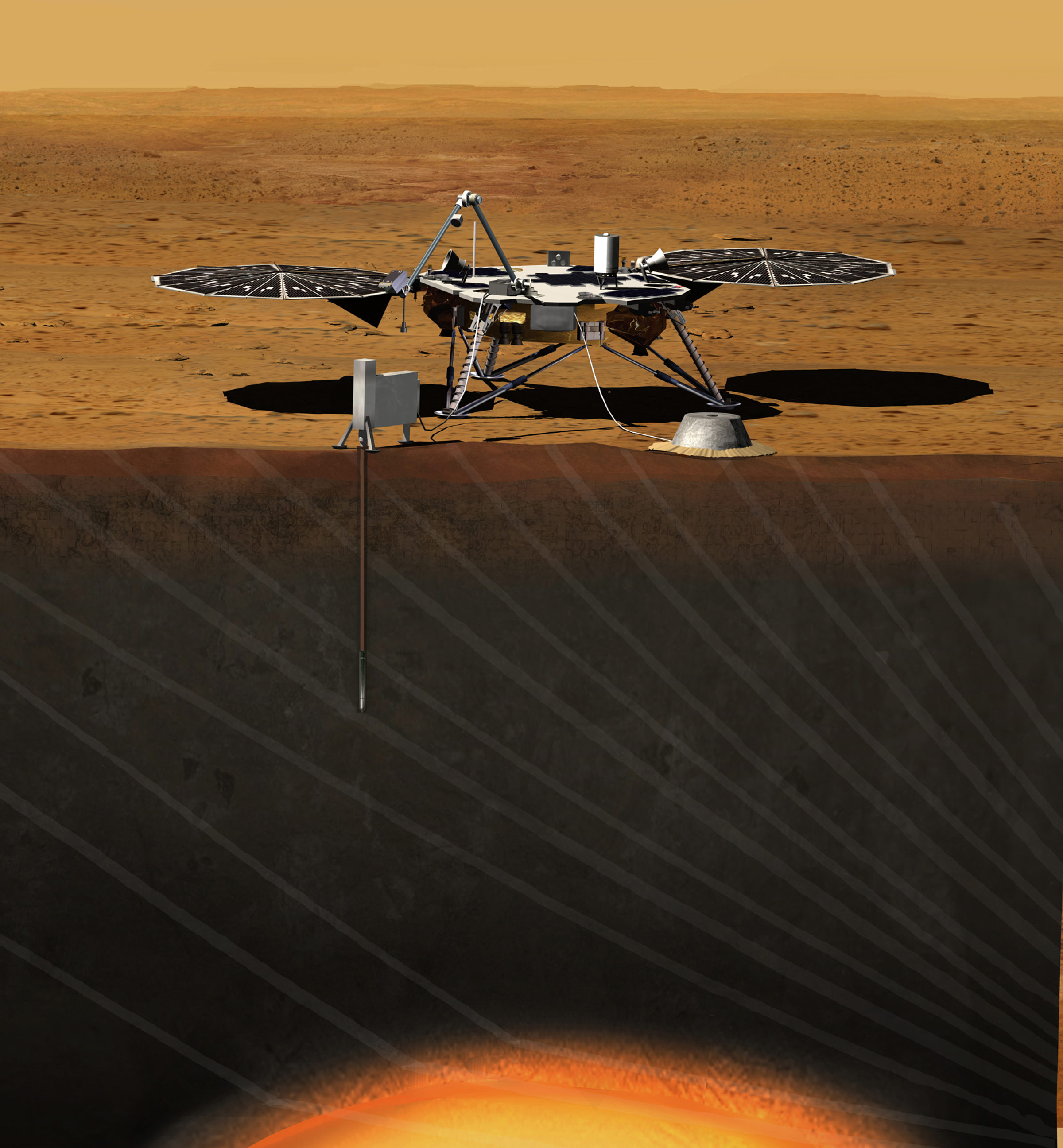Bruce Betts • Aug 20, 2012
NASA Selects InSight Mars 2016 Lander
As part of its Discovery program, today NASA announced the selection of the InSight lander mission to investigate the interior of Mars. InSight (Interior Exploration using Seismic Investigations, Geodesy and Heat Transport) will use a seismometer, a heat flow experiment, and precision tracking of the spacecraft’s location (and thus the rotation of Mars) to better understand the Martian interior. InSight is led by W. Bruce Banerdt, a planetary geophysicist at JPL. InSight is scheduled to land on Mars in September 2016 to begin its two-year scientific mission.
InSight will be the first Mars lander designed to take a “look” into the deep interior of Mars. Geophysicists (Areophysicists?), including Banerdt, and planetary scientists in general, have been trying to get a geophysical mission for decades. Viking carried seismometers, but because they weren’t well anchored to the Martian surface they acted more as wind sensors than as sensors of seismic activity. The cancelled European Netlander mission, under development about a decade ago would have put down several small geophysical landers. So, we still know essentially nothing about the prevalence of Mars quakes, and very little about the interior of Mars.
Using its various instruments InSight will attempt to investigate whether the core of Mars is solid or liquid like Earth's; why Mars does not seem to have plate tectonics; and more generally how the terrestrial planets formed. InSight will provide insight (yes, I said it) into how the terrestrial planets went from original formation to differentiated bodies (heavy stuff in the middle core, medium stuff in the mantle, light stuff in the crust – and yes, stuff is a technical term). Mars is seen as not so big that its formation history has been mostly wiped out like on Earth, and not so small that it would have evolved much differently than Earth.
The French space agency Centre National d'Etudes Spatiales (CNES) is leading a consortium of European groups providing the seismic instrument, which like seismometers on Earth, will be used as a probe of the interior of the planet. The German Aerospace Center, or DLR, is contributing the heat flow probe which will hammer five meters into the Martian subsurface, deeper than all previous arms, scoops, drills and probes, to learn how much heat is coming from Mars' interior and reveal the planet's thermal history. Heat flow probes were used on the Moon as well as Earth for similar reasons. In addition, the Rotation and Interior Structure Experiment (RISE), led by JPL, will use the spacecraft communication system to provide precise measurements of planetary rotation, which will use the wobble it measures to help determine the distribution of Mars’ internal structures.
The lander will have black and white cameras on the robotic arm, one similar to the Navcam on the Mars Exploration Rovers and one similar to their Hazcams. They will be used for context and directing the placement of the seismic and heat flow instruments.
The spacecraft itself is closely based on the Phoenix lander and will, like Phoenix, be built by Lockheed Martin, and will be solar powered. The image art below shows the similarity with Phoenix. InSight will be placed in the equatorial region to maximize the power from solar panels. As a Discovery mission, the cost of the mission, excluding the launch vehicle and related services, is capped at $425 million in 2010 dollars.
In May 2011, NASA selected three mission concepts from 28 Discovery proposals for funding to conduct preliminary design studies and analyses. In addition to InSight, there was the Titan Mare Explorer (TiME), a Titan lander that would have floated on a methane-ethane sea, and Comet Hopper that would have landed on a comet multiple times.
John Grunsfeld, NASA Associate Administrator for NASA’s Science Mission Directorate, when asked at a press conference today, said not only was the selection not affected by the success of Curiosity, but that the selection meeting was actually held prior to Curiosity’s landing. He also said that all three missions had top notch science and ability to perform their science with the instruments provided, with only shades of grey separating them, but review panels felt that InSight had more probability of doing what they proposed for the budget proposed.
InSight was formerly known as the Geophysical Monitoring Station (GEMS), but NASA requested that name be reserved for an astrophysics mission known as the Gravity and Extreme Magnetism Small Explorer that was already in development, and since the name change, that astrophysics mission has been cancelled.
Let’s Go Beyond The Horizon
Every success in space exploration is the result of the community of space enthusiasts, like you, who believe it is important. You can help usher in the next great era of space exploration with your gift today.
Donate Today

 Explore Worlds
Explore Worlds Find Life
Find Life Defend Earth
Defend Earth


